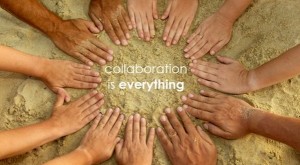 It was last week when I walked into my director’s office and noticed something odd: The lady sitting at my director’s desk was not my director! In fact, it was someone from an entirely different department. I work in the public relations division at R&R Partners, Nevada’s largest advertising agency. We are an integrated agency offering our clients a variety of tools to help disseminate their message to key stakeholders, including media planning/buying, creative services, account management, digital strategies, public relations, government affairs, and interactive marketing.
It was last week when I walked into my director’s office and noticed something odd: The lady sitting at my director’s desk was not my director! In fact, it was someone from an entirely different department. I work in the public relations division at R&R Partners, Nevada’s largest advertising agency. We are an integrated agency offering our clients a variety of tools to help disseminate their message to key stakeholders, including media planning/buying, creative services, account management, digital strategies, public relations, government affairs, and interactive marketing.
So why was the director of our digital team sitting among the public relations practitioners? The answer lies in collaboration and integration – two words that work in tandem to help define one another. According to Kitchen and Burgmann (2010), integration with regard to marketing is “the attempt to present a consistent message across the available promotional mix elements…” (p. 1). For example, at R&R Partners our goal is to mesh marketing disciplines in our marketing toolbox to create an impactful campaign for our clients. Collaboration is how the individuals in the agency work together to get the job done in a consistent, seamless manner.
In order to foster an environment of collaboration at R&R Partners, the executives decided to move directors’ offices to other departments in an attempt to increase communication among disciplines. Directors from other departments randomly collided in order to get out of their marketing silos and interact with other disciplines. The theory stems from several challenges facing integration and collaboration at the agency level.
What’s the Problem?
Kitchen and Burgmann (2010) explain that collaboration begins with senior management. At the top, strategies are devised to maximize integrated marketing campaigns for clients. However, the idea of integrated marketing is relatively new. Formerly, agencies would specialize in one marketing discipline, such as media buying or creative services. In order to formulate a cohesive message, agencies began to integrate the disciplines to help their clients.
Of course, as new as this integration idea is, it created conflicts at the top. Kitchen and Burgmann (2010) explain that some of these issues stem from fear of change, turf battles (the need to protect one’s status, cross-functional training, the need for equal consideration across functional areas, etc.), lack of strategic vision, KPI difficulties, control issues and many more.
In essence, PR managers didn’t understand the creative process. Creatives didn’t understand how to buy and plan media. Web developers didn’t understand the flexibility of media flights. And so on.
This necessitated the need for a change to the integrated process. Collaboration became one of the biggest focuses internally at IMC agencies in order to better facilitate external clients.
Random Collision Theory
“The most valuable tribe is a tribe of unusual suspects who can challenge your world-view, expose you to new ideas, and teach you something new. A tribe of unusual suspects can change the world if it is connected in purposeful ways.” –Saul Kaplan, CNN Money
Just like the above quote states, collaboration is achieved when all parties involved are open to new ideas that cohesively drive an overall message or campaign. In a recent article by Saul Kaplan on CNN Money, the idea of “random collision” is introduced to represent how collaboration may be accomplished in an environment consisting of different personalities and expertise.
Random collision theory is the idea that marketers must think outside their own silos in order to truly present clients with opportunities that will set their products or services apart from competition. It is necessary to collide with unusual suspects in order to expand our minds and truly accomplish collaboration in an integrated environment.
The term “unusual suspects” is used to define comfort zones. Random collision occurs when one is open to step out of his/her comfort zone and mingle with unusual suspects. In order to foster collaboration, marketers need to be comfortable with interacting with others to learn new ideas and how those ideas may be used to develop new marketing tactics.
One of the most prevalent examples of random collision at work is via social media. Social media has allowed us to interact with unusual suspects and open our mind to new relationships and concepts. Kaplan (2012) explains, “We live and work in a networked world complete with mega bandwidth and social media platforms to help us collide with more unusual suspects if we just look up from our silos.” In order to achieve integration, marketers must collide with other disciplines. They must collaborate effectively and think in different silos.
At R&R Partners, random collision theory is not just an idea, but also a way of conducting business. It has changed the way we collaborate on a daily basis, making our integrated efforts more valuable to our clients. I now walk down the public relations aisle at work and talk to social media strategists and creatives on the way to my director’s new office in the media section. Government affairs associates are seen talking with digital production coordinators in the studio. Random collision has not only created an outlet for establishing new relationships at R&R, it has equipped us with the necessary tools for successful collaboration.
References:
Kaplan, S. (2012, May 9). The “random collision” theory of innovation. CNN Money online. Retrieved from: http://tech.fortune.cnn.com/2012/05/09/random-collision-innovation/
Kitchen, P. & Burgmann, I. (2010). Integrated marketing commuication. Wiley International Encyclopedia of Marketing. John Wiley & Sons Ltd.



One Response to Don’t Hate, Collaborate – Random Collision Theory